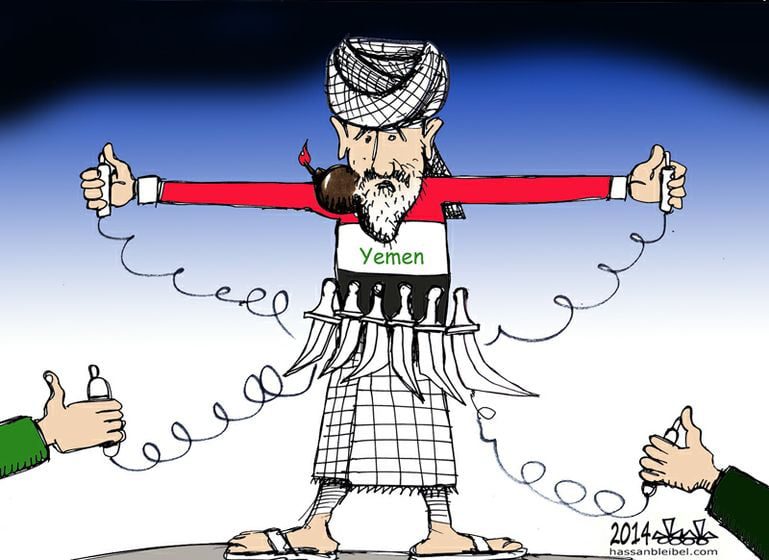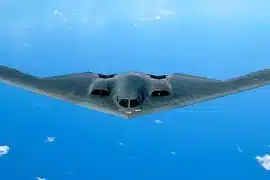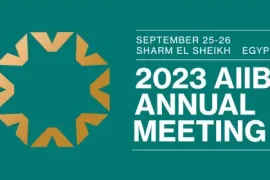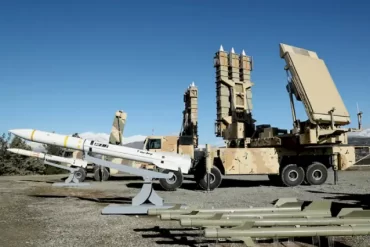
With ‘Operation Decisive Storm’, Saudi Arabia intends to show Tehran and its followers a regional red-line. The code name is probably an indication of what Saudi Arabia and its allies would like to happen in Yemen, rather than what will actually occur since a decisive outcome is the least likely prospect for Yemenas it has long been in Iraq and Afghanistan.
The Houthis, a Yemeni rebel group hailing from northern Sa’ada organized under the leadership of Abdel-Malek Al Houth and belonging to the Zaidi sect of Shia Islam, took control of the capital, Sana’a, last year in a surprise offensive and later moved on Aden, Yemen’s second city in the south, exiling the Saudi-backed president, Abd-Rabbu Mansour Hadi. As such they have been the subject of recent discontent of Saudi Arabia charged by the fear that Iran might be colluding with this Shia rebel faction to extend its ambition to one day dissolve its mighty Arabian empire. Under such political developments, Saudi Arabia declared war on its southern neighbor Yemen, calling on a broad military coalition for launching an offensive called the “Operation Decisive Storm”. Behind Saudi Arabia stood Jordan, Morocco, Bahrain, Kuwait, Qatar, Egypt, Sudan, the UAE, the U.S., the EU, and Pakistan.
The equation for Saudi Arabia has been that since Houthis are Shia and therefore all Shia in Yemen are Houthis. Since all Houthis are in alliance with Iran, they should therefore,and all Shia in Yemen for that matter, should be treated with suspicion and eventually contained. Labelling the Houthis as Shia and inferring they represent Yemen’s entire Shia community has fueled negative sectarian sentiment while stripping all Shia in Yemen from their inalienable civil rights. Such rhetoric might just serve the kingdom’s reactionary religious stance, but it has put Yemen and of course all Yemenis in the crossfire of a dangerous debate- freedom of religion, apart from the fact that such a reduction of Yemen’s political, social, and religious makeup is as biased as it is profoundly erroneous. The bombing campaign does not seem to be bringing in measurable gains for the Saudis. The Saudi campaign has had limited effect in actually rolling back the Houthi gains except the fact that the Saudi-led attacks expanded what had been a local power struggle within Yemen into a regional conflict.
Yemen might have suffered many woes over the years or decades,but sectarianism was never part of the equation. Then how the Yemeni Zaidi community, which has been around since the eighth century suddenly became a potential threat to national security and the region? On the contrary, the regional powers might be exploiting religion to rationalize very worldly ambitions: geopolitical dominance. An important element that needs to be brought into consideration is that Saudi Arabia, which is defined within the religious parameters of Sunni Wahhabism are prone to reject anything that does not fall in line with their understanding of the divine.
While Yemen is a Muslim nation and Islam acts as the axis upon which its constitution has been weaved, but unlike its northern neighbor Saudi Arabia, it has historically been a tolerant and religiously inclusive country.
Understanding social-religious makeup of Yemen is also necessary in drawing a holistic picture of the current ongoing war. While Yemen is a Muslim nation and Islam acts as the axis upon which its constitution has been weaved, but unlike its northern neighbor Saudi Arabia, it has historically been a tolerant and religiously inclusive country. Yemen’s Muslim population can be broken down into two main religious groups- Zaidis to the north and Sunnis to the south. About 40 percent of Yemen’s total population is Zaidi who are also known as Fivers and are different in their philosophy from the Twelvers—mainstream Shia Islam and are very little different from Sunnism.
Yemeni Zaidis were hardly an oddity or even a new religious phenomenon, with a religious tradition stretching back across the centuries. The Houthis, a tribal faction from northern Sa’ada organized politically under the denomination, Ansarallah, are Zaidi Muslims. However, their affiliation to Zaidi Islam has been of no consequence when it came to their political demands and like any other political groups in Yemen, the Houthis have defined themselves not through their faith but through their demands. While all Houthi tribesmen are Zaidis, not all Zaidis are Houthis —and they shouldn’t be confused with the group’s political arm, Ansarallah. The Houthis are merely a tribal group within Yemen and they do not speak or represent the whole of Yemen’s Zaidi community. And while the Houthis might have predominance within Ansarallah, not all Ansarallah members are Houthis. What seems to be the case is that religious identity has suddenly appeared as a potent political catalyst, a weapon of opportunity.
THE GREAT GAME
Since the Arab Spring, half a dozen nations in the Middle East have been bogged down in sectarian rivalries and bloody struggles for power. Syria’s civil war is spilling into Lebanon and threatening Jordan and Turkey as well, while Iraq has been effectively thrown apart among three factions — Shiite, Sunni and the Kurdish. At the same time, a particularly violent and radical group, the Islamic State of Iraq and Syria, or ISIS, has seized large swaths of territory in Syria and Iraq. Now Yemen has erupted into a war that has drawn in forces from the whole region. While each conflict may have many local causes ranging from complex tribal rivalries and struggle over oil, underlying them all is the game of balance of power between the Sunnis and Shiites. Iran, the largest Shiite state, is spreading its influence by funding and arming militias throughout the region, while Saudi Arabia, the largest Sunni state, is trying to counter by organizing a joint Arab defense force of elite troops from Sunni nations.
Being the birthplace of the Islamic faith, Saudi Arabia plays a prominent and unifying role in the region. However, it also harbors Wahhabism, an extreme interpretation of Sunni Islam, making the Kingdom a dividing force in the region. Wahhabis are the most anti-Shiite group among the Sunni Muslims. This is one of the reasons Saudi Arabia is in a regional competition with Iran, which is ruled by adherents of an extreme Shiite version of Islam. This is why we see that as the Arab Spring was unfolding, the worried Saudis began a series of military interventions throughout the Middle East. They protected friendly autocratic governments, overthrew others and attacked rebel groups beginning with providing small contingency force in the small Shiite-majority kingdom of Bahrain ruled by a Sunni royal family. The Saudi intervention in Bahrain was protested by Iran and Iraq, deepening the Shiite-Sunni divide in the region.Since the crackdown on the Muslim Brotherhood in Egypt, Saudi Arabia and other Persian Gulf countries have been supporting the Egyptian government with many billions of dollars to assure its stability. But that has given ISIS another opportunity to expand and Egypt now suffers from a growing insurgency of ISIS radicals. In face of oppositions from Iran and Iraq again, Saudi provided support for rebels in Syria which have also had repercussions across the Middle East and contributed to the rise of ISIS. Now, the air campaign against the Houthi positions in Yemen is a step by Saudi Arabia taken to ensure two goals: neutralizing non-state actors, which means strengthening the central government, and combating sectarian-inspired conflicts and regional instability, that is keeping the delicate political balance of the Middle East to its preference.
It is true that Yemen’s Sunni president needed urgent support to keep his last stronghold in the south, bringing the rebel threat closer to Yemen’s neighbor. But the Saudi intervention has further escalated the sectarian conflict in the Middle East and it is expected that Iran will not stand by while its Houthi allies are being attacked from the air- which will only create a chain of actions and reactions between the Sunni and Shia poles in the region.
The move towards lifting of the economic sanctions and the nuclear deal with Tehran has incited Saudi paranoia,since from the Saudi perspective this means two things: the sanctions ¬relief may produce a flood of cash for Shiite Iran, emboldening it to pursue a more assertive foreign policy, and provide the capability to create a nuclear weapon – since the deal will only take effect for a relatively short period of time, 15 years, and will not destroy Iran’s technical capabilities to maintain a nuclear program. The Saudi-led coalition against the Houthi rebels in Yemen is an indicator of Saudi’s new rulers wish to transform the political equation from a balance between the state and non-state actors into a balance between a government and an opposition, both from within the state’s framework which would render both Iran and ISIS much less effective. The Saudis believe that trimming Iran’s regional influence would increase the chances of a better nuclear deal and is planning to acquire deterrent capabilities, which means developing its own nuclear program. Chances are that Saudi Arabia will seek new alliances, given the decline of US influence and the unreliability of American assurances – and Saudi Arabia, itself would take up the first line of defence against its enemies.
THE RISING STAKES
The stakes are high for the Saudi Arabia’s leadership – the ultra-conservative Wahhabi religious establishment- as they bid for leadership of the Sunni Arab world and their determination to show that it can become a military counterweight to Shiite Iran, its main rival and whom they consider the foreign backer of the Shiite-related Houthis. The stakes are also very high for King Salman, who took over power in late January after the death of his predecessor Abdullah. Most importantly, the stakes are high for his son, Prince Mohammed bin Salman, who despite having no military experience has been appointed defense minister at the age of only 29. With a swift and sudden rise to power two months ago, he has emerged as one of the most influential players in the House of Saud.
After ascending to throne and consolidating power, King Salman appointed the prince to three key cabinet posts- he has been made the defense minister, the head of a newly-formed economic council and also placed in the role of chief of the royal court. Prince Mohammed has been the architect and very public face behind Saudi Arabia’s boldest military campaign in nearly 100 years.Just a week of fighting, and he has become the poster boy for the Saudi-led military campaign, and also the embodiment of his country’s recent shift toward a more hawkish foreign policy in the region.To experts, the prince’s dynamic role reflects the marked departure in Saudi foreign policy. So far, the country has exercised its influence through its financial clout and diplomacy, though it has spent billions to develop military facilities.
The young Saudis seem to be a generation who are more confident of themselves and who see a need for flexing military muscle and drawing a line in sand.
The recent shift shows the desire among younger Saudis, who unlike their predecessors, are more willing to assert the kingdom’s power and influence over the region. According to Abdulkhaleq Abdulla, a political science professor at United Arab Emirates University the young Saudis seem to be a generation who are more confident of themselves and who see a need for flexing military muscle and drawing a line in sand. Yet even with 100 fighter jets, 150,000 soldiers and a growing coalition, a Saudi victory in Yemen seems far fetched. While the air strikes may have prevented the Houthis and their allies from seizing control of all of Yemen, but it has not reversed their advance.
The Saudis seem to be very committed to this operation and intend to see it through to the end, but they are being short-sighted. Saudi Arabia needs to be cautious and balance its short-term objectives of containing Houthi activities along its southern border, against its long-term goal of having a stable Yemen that does not fuel sectarian issues and radicalization as they cannot continue an air campaign for indefinite period. What is lacking is a clear objective or strategy for reaching a goal. Given all its destruction, the Saudi air campaign has sparked a humanitarian crisis, with food and water shortages, and the few functioning remnants of the Yemeni government which are also on the verge of collapse. According to various estimates, the mounting death toll exceeds 3,000 civilians since the beginning of the strikes led by the coalition.The latest deaths tolls highlight how this conflict is being ignored by the international community whichis preoccupied with the threat from Islamic State’s advances in Syria and Iraq.However, Yemen descending into an all-out war, which is a likely scenario, could lead to a greater humanitarian crisis than that of Syria, in terms of refugees and mass starvation and Al-Qaeda ending up being the main winner after this conflict. As for Saudi Arabia, Prince Mohammed’s future may hinge on the outcome of this intervention- if it turns out to be a success Prince Mohammed will probably be a hero. And if it fails, his position might be a question which will haunt King Salman.







